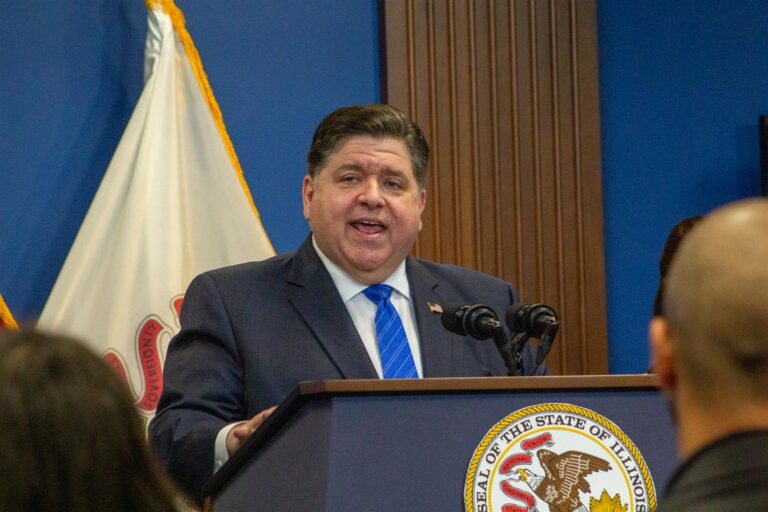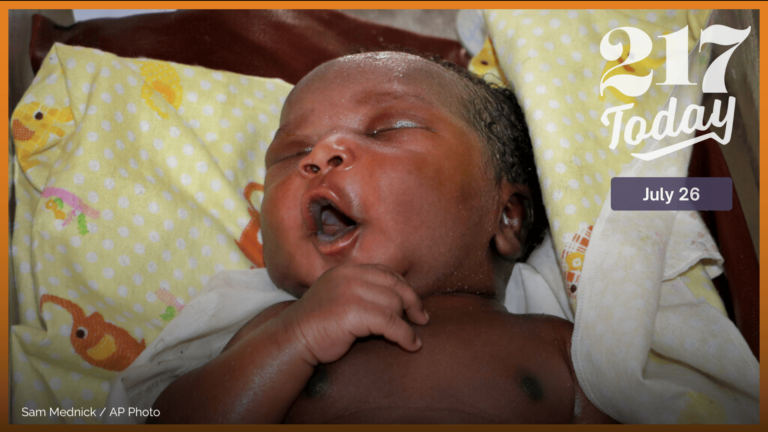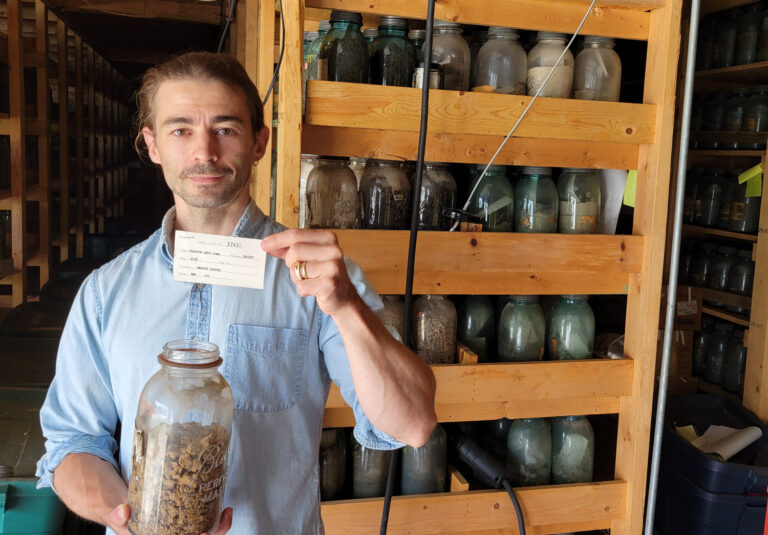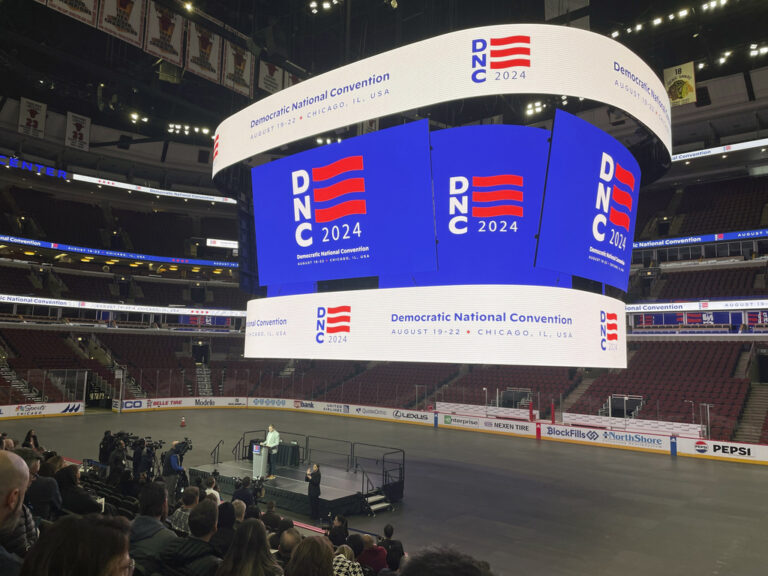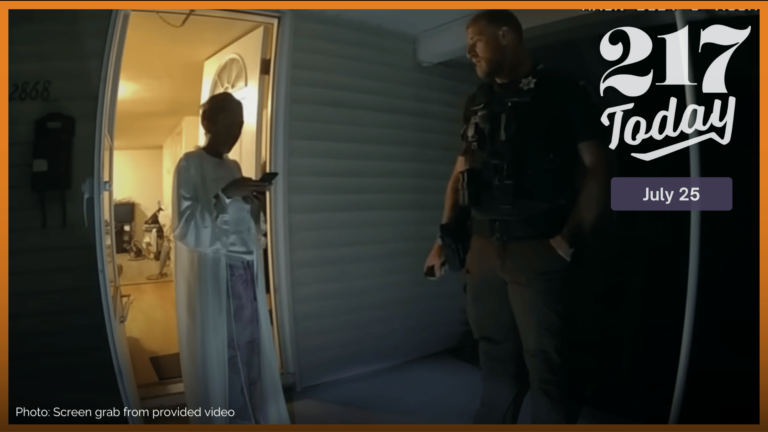CHICAGO – As winter quickly approaches, Gov. JB Pritzker on Thursday announced plans for the state to spend an additional $160 million to aid and house a sustained influx of migrants sent to Chicago from the nation’s southern border.
The administration sold the plan as a three-phase approach: “welcome, shelter, independence” – aimed at meeting the needs of migrants based on how long they’ve been in Chicago and whether they’re planning to stay.
The state will spend $65 million to create a winterized “soft shelter site” to address severe shortages in the city’s shelter system, and another $65 million to assist with legal and housing assistance to resettle the migrants. Another $30 million would go to launch in intake center.
“With Congress likely unwilling to act and with lives of innocent people at stake, the hurdles we face seem far beyond the scope of any one state and yet everything we can do, we must do,” Pritzker said at a news conference announcing the plans.
Thursday’s announcement was made easier by the fact that the state is running a budget surplus. In an updated five-year economic forecast published Wednesday, the governor’s budgeting agency increased current-year revenue estimates by more than $1.4 billion.
That created leeway for the state, which has already spent $470 million on the response to asylum seekers since the wave of new arrivals to Chicago began 15 months ago, according to the administration’s breakdown of state agency spending. The city is on track to spend more than $500 million of its own money to address the influx by the end of next year.
But Pritzker emphasized the state isn’t handing over the $160 million directly to the city of Chicago, instead characterizing the plan as offering the types of “wraparound” services state agencies otherwise provide to Illinois residents. He chided the city for an intake and resettlement process that he said was moving too slowly and said Thursday’s action plan was spurred by his administration’s analysis of data regarding the influx of migrants.
“We’re stepping in here to try to help and accelerate this process,” the governor said. “It isn’t moving fast enough. That’s why you’re seeing people still on the street…We cannot have people freezing on the streets of Chicago as we head into very cold weather.”
‘Welcome’ and ‘shelter’
In the last 15 months, Chicago has seen more than 24,000 migrants arrive – the vast majority coming by bus at the direction of Texas Gov. Greg Abbott – according to city data.
In late September, the number of weekly arrivals to Chicago began surging, reaching nearly 3,000 the first week of October. But since then, the numbers have once again leveled off, averaging about 700 asylum seekers weekly for the last three weeks. Read more: Pritzker urges Biden to intervene amid ‘untenable’ pace of migrant arrivals
With federal coordination of migrant relocation efforts lacking, the Pritzker administration said it was critical to create an intake center to coordinate the new arrivals. That includes identifying which migrants are hoping to go somewhere else in the U.S. from Chicago, and those who have sponsors in Illinois.
The state will pay $30 million to launch the intake center, at a location in Chicago that is yet to be determined. The center will provide a centralized place for migrants to get assistance from community-based organizations already working with the asylum seekers. It would also likely serve as the new de facto location for buses to drop asylum seekers, an administration official said.
Pritzker on Thursday estimated having a centralized intake center would also help reduce the number of new arrivals going to city shelters by 10 percent. If that projection bears out, it would be a weight off Chicago’s already overloaded system.
According to city data, nearly 12,300 migrants were staying in city shelters as of Thursday morning. But another 2,400 were awaiting placement in those shelters – the majority of whom have been sleeping in police stations, with hundreds more taking up temporary residence at O’Hare Airport.
As the pace of migrant arrivals picked up in September, Pritzker was critical of Mayor Brandon Johnson’s proposal to build tent encampments for migrants, telling reporters he didn’t think it was “the only option.”
But on Thursday, Pritzker said the state would spend $65 million on a similar endeavor – “dependent on the city turning over a property to us.”
Asked why he’d softened to the idea, the governor pointed to the quickly approaching cold weather. In just a week, on Thanksgiving, the high temperature in Chicago is forecasted to be 24 degrees – more than 40 degrees below Thursday’s mild temperatures.
“That is a reflection again of the fact that we are heading into winter very shortly,” Pritzker said. “And that not enough shelter space has been created between the last couple of months when I said that and now.”
Johnson on Wednesday announced a new policy limiting shelter stays to 60 days, although no one will be forced out if they’re able to prove they’ve made progress securing permanent housing.
The winterized shelter site would house as many as 2,000 people at any given time, and the Pritzker administration estimates it would be up and running for as long as six months.
‘Independence’
The final $65 million chunk of Pritzker’s migrant aid plan will be spent on programs for asylum seekers, including legal help, workforce training and rental assistance, all with the aim of getting new arrivals out of shelters and into more permanent housing.
Pritzker, along with other political and business leaders, spent months urging President Joe Biden’s administration to speed up the application process for asylum – a prerequisite to applying for work permits. Read more: Pritzker, state leaders call on Biden to allow Illinois to sponsor work permits for migrants
The governor on Thursday said those immigration application processing times have decreased in the last few months, and that some migrants have either already been authorized to work legally in the U.S. or are on their way to doing so.
Through a series of pro-bono legal aid workshops, the state aims to assist 11,000 shelter residents with submitting asylum or work permit applications by February. However, the Biden administration has not agreed to waive the fees associated with the paperwork.
Those already living in city shelters by Friday will be eligible for three months’ worth of rental assistance – down from six months that had been offered previously.
Kirstin Chernawsky, Illinois Department of Human Services associate secretary for early childhood family and community, said cutting the rental assistance time in half allowed the state to reach all current shelter residents and would also send a message.
“This allows us to tell all new arrivals there is no more emergency rental assistance available, so that folks who are choosing to come to Chicago understand what it is that they are coming into,” Chernawsky said Thursday.
$160 million
The money comes from the IDHS budget, equaling about 1 percent of the department’s $13.7 billion all-funds budget for the current fiscal year.
“So there are lines in the IDHS budget that are, you know, exactly for the purposes of providing services – wraparound services as we’re calling them – to people who are living in the state of Illinois, and those are the places that we’re pulling dollars from to assist these asylum seekers,” Pritzker said.
The reallocation of funding is made easier, according to the administration, because of the anticipated surplus now projected by fiscal forecasters with one-third of the fiscal year in the books.
The Governor’s Office of Management and Budget updated its general revenue estimate to just over $52 billion on Wednesday, driven in large part by corporate and personal income taxes and a one-time increase in federal funds. The state had only budgeted for about $50.6 billion in revenue.
But the estimate from GOMB also identified about $1 billion in additional “budget pressures” for the current fiscal year, including asylum seeker response, caseloads at the Department on Aging, increased group health insurance costs and other factors.
The administration noted a supplemental spending plan could be on the table when lawmakers return for their regular session in January to ensure that other IDHS services are not crowded out by the reallocation of funds to serve asylum seekers.

